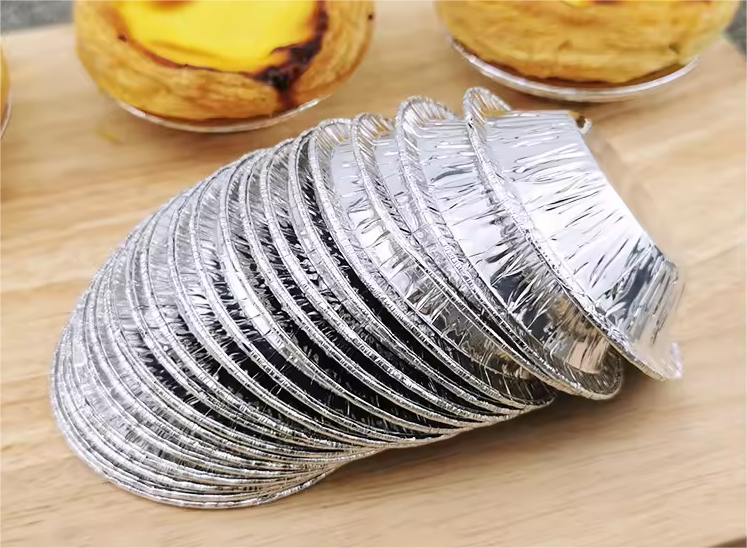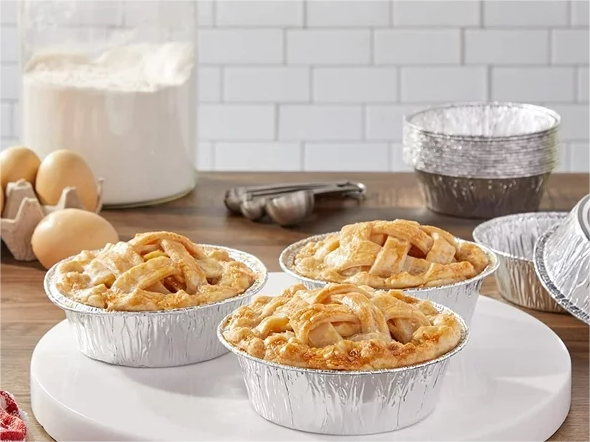Aluminum pie pans are indispensable tools in the world of baking, offering convenience, versatility, and excellent heat conductivity. However, not all pie pans are created equal. Understanding the classification of aluminum pie pans can help bakers and chefs select the most suitable option for their specific baking needs. In this article, we’ll delve into the various classifications of aluminum pie pans and explore their unique features and applications.
Size and Shape
Aluminum pie pans come in a variety of sizes and shapes to accommodate different types of pies and baking preferences. Common sizes include:
Standard: These are the traditional round pie pans with diameters ranging from 8 to 10 inches, suitable for most pie recipes.
Mini: Smaller-sized pie pans, typically around 4 to 6 inches in diameter, perfect for individual or mini pies.
Deep-dish: Pie pans with taller sides, ideal for making deep-dish pies or pies with generous fillings.
Additionally, pie pans may come in square, rectangular, or oval shapes, offering versatility for various baking applications.

Material and Construction
Aluminum pie pans can vary in material composition and construction, each offering unique benefits:
Standard Aluminum: Most pie pans are made from standard aluminum, known for its excellent heat conductivity and affordability.
Anodized Aluminum: Anodized aluminum pie pans undergo an electrochemical process that enhances durability, corrosion resistance, and non-stick properties.
Heavy-Duty Aluminum: These pie pans are constructed from thicker gauge aluminum, offering increased durability and resistance to warping or denting.
Consider the material and construction of the pie pan based on your baking preferences, desired durability, and budget.
Rim Style
The rim style of a pie pan can affect the presentation and ease of handling:
Rolled Rim: Pie pans with rolled rims feature a slightly raised edge, providing a sturdy grip and preventing crusts from sliding off during baking or serving.
Fluted Rim: Some pie pans have fluted or decorative rims, adding aesthetic appeal to baked pies and enhancing presentation.
Choose a rim style that suits your baking style and aesthetic preferences.
Coating and Finish
Aluminum pie pans may come with various coatings or finishes to enhance non-stick properties and ease of cleaning:
Non-Stick Coating: Some pie pans are coated with a non-stick surface, reducing the need for greasing and ensuring easy release of baked goods.
Natural Finish: Other pie pans feature a natural aluminum finish, which may require greasing or parchment paper to prevent sticking.
Consider your preference for non-stick properties and ease of cleaning when selecting a pie pan coating or finish.

Conclusion
The classification of aluminum pie pans encompasses a variety of factors, including size, shape, material, construction, rim style, and coating. By understanding these classifications, bakers and chefs can make informed decisions when choosing pie pans for their baking endeavors. Whether you’re baking traditional fruit pies, savory quiches, or decadent desserts, selecting the right aluminum pie pan can elevate your baking experience and ensure delicious results every time.


